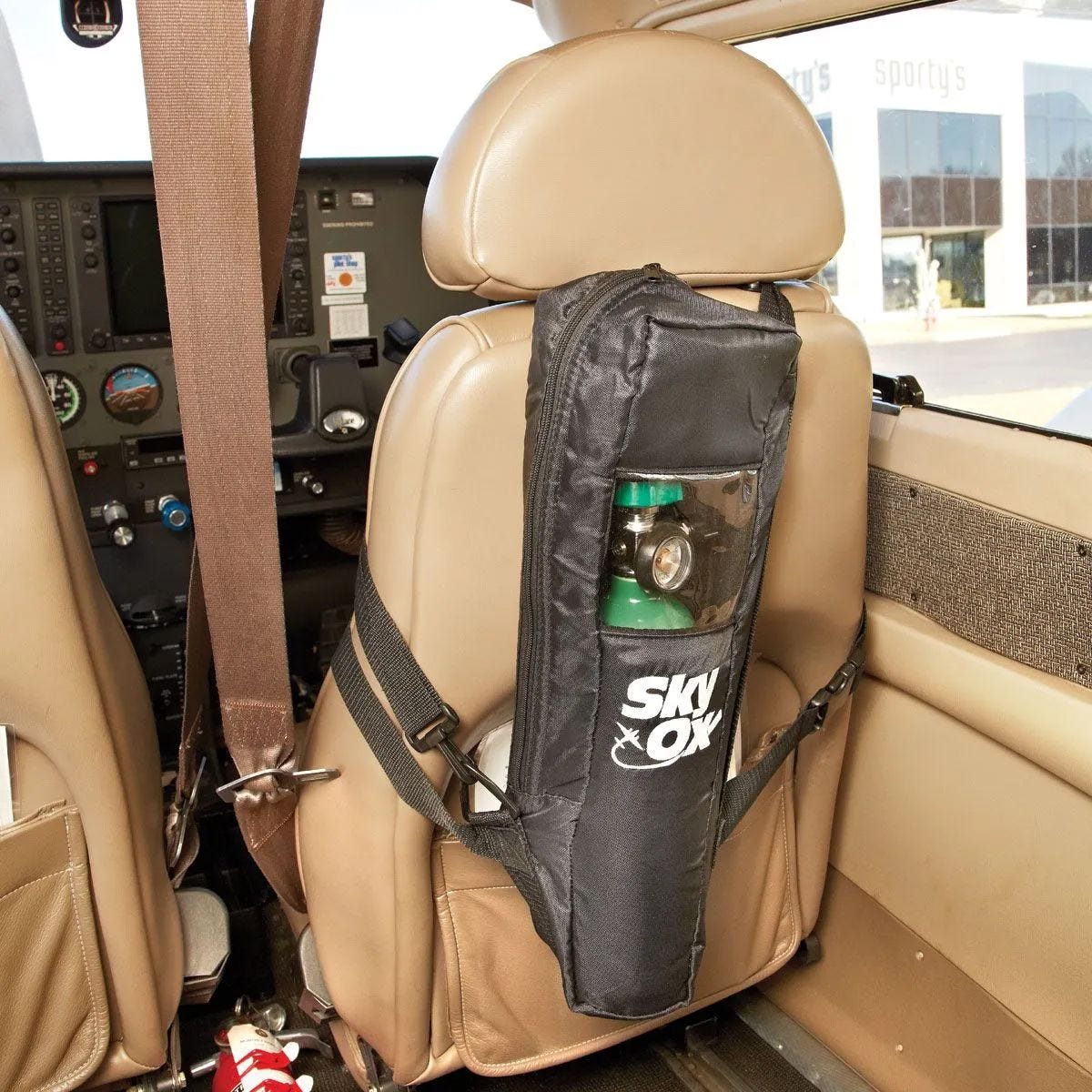What pilots should know about oxygen
|
Getting your Trinity Audio player ready...
|
The regulations require that pilots use supplemental oxygen if you fly more than 30 minutes at cabin pressure altitudes of 12,500 feet or higher. Above 14,000 feet, pilots must use oxygen at all times. And beginning at 15,000 feet each occupant of the aircraft must be provided supplemental oxygen. These rules are intended to guard against deficient oxygen saturation levels. A 100% level is ideal while 95% is considered a minimum and below this level is a point in which one may begin to experience hypoxic symptoms which can be tantamount to flying drunk.
Because the risk of hypoxia varies among pilots and can is affected by your overall health, age, and many other factors, it’s recommended to utilize supplemental oxygen about 10,000 feet during the day and 5,000 feet at night where the body demands even more oxygen. Consider adding a pulse oximeter to your flight bag for an accurate indication of oxygen levels. Consider the information below from author and pilot, Doug Ranly, as you explore supplemental oxygen options – Ed.
—
Aviators find themselves using oxygen as they explore higher altitudes in non-pressurized cockpits. Some aircraft have built-in oxygen systems while other pilots choose a portable system for special occasions when going higher makes sense. Regardless of the type of system, the FAA specifically recommends using aviation grade oxygen when flying.
 This brings up an important question: what are the differences between the different grades of oxygen? Fortunately, it’s not that complicated. There are three main types of oxygen.
This brings up an important question: what are the differences between the different grades of oxygen? Fortunately, it’s not that complicated. There are three main types of oxygen.
Aviation Grade Oxygen – The FAA recommended oxygen is 99.5% pure oxygen. In addition, moisture has been removed with the resulting moisture content of less than .01%. The thought here is that moisture can freeze in the lines or in the regulator at colder altitudes. This could be more of a problem for systems located outside the confines of the cockpit, as most cockpit temperatures tend to stay above freezing (pilots would prefer not to be freezing too).
Medical Grade Oxygen – Similar to aviation grade oxygen, medical grade oxygen is 99.5% pure oxygen. However, there isn’t a specific requirement on moisture content. This might not be a huge deal, as moisture is normally removed in the process of compressing oxygen. After all, water in your oxygen tanks is a really bad thing. Hospitals will often add moisture to oxygen as they administer it to their patients.
Industrial Grade Oxygen – Pressurized oxygen is used in many industrial applications. Most commonly, you’ll find pressurized oxygen tanks in welding shops. This is why you’ll often hear industrial grade oxygen referred to as “welder’s oxygen.” This oxygen is rated to 99.2% pure oxygen as opposed to the 99.5% for aviation and medical. In addition, industrial grade oxygen is not filtered for very small particles and might have a higher percentage of moisture.
The FAA recommends that pilots only use aviation grade oxygen in their systems to ensure they work properly.
- 5 “must-have” products for IFR training - February 7, 2024
- Five common student pilot mistakes - May 22, 2023
- What pilots should know about oxygen - September 19, 2022


